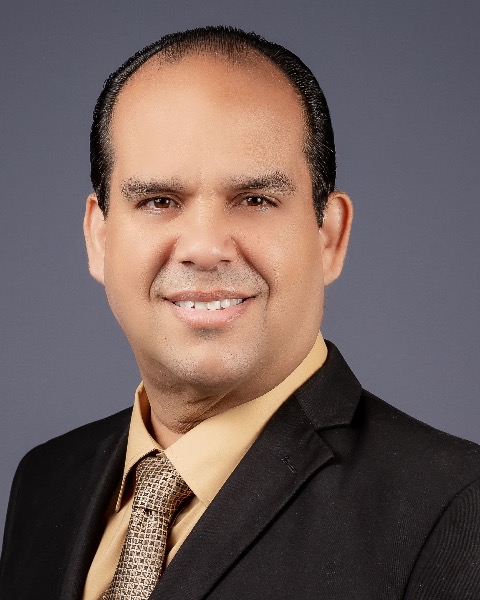Whole Person Health and Quality Improvement
CE Credit Available
CSG1 - Timely Twenty-Minute Tips
Prerequisite: N/A
CPE: 1.2
CME: 1.0
CE: 0
CEU: 0
Clinician and Patient Impact of Ambient AI intervention in an FQHC Network Session Description: Documentation burden in electronic health records (EHRs) has been found to be a significant contributor to clinician burnout and can detract from interactions between patients and providers. Advancements in artificial intelligence (AI) and natural language processing (NLP) offer potential technological solutions to mitigate these challenges. FQHCs with tight financial margins need to ensure that potential solutions have a strong, measurable return on investment. Healthcare at a Crossroad: How AI is Addressing Workforce Shortage and Expanding Patient Access in a FQHC setting Session Description: Puerto Rico’s healthcare system is at a critical breaking point, with a 50% decline in physicians over the past decade and the fastest-aging population in the U.S., where seniors (65+) now outnumber children under 15 nearly 2 to 1. These shifts have severely strained the healthcare workforce, forcing patients to wait longer for care or travel off-island for treatment. Federally Qualified Health Centers (FQHC) and hospital systems are struggling to keep up with demand, leading to burnout among providers, limited appointment availability, and a worsening effect in health outcomes in chronic care management. Revolutionizing Hypertension Care: Artificial Intelligence and Image-Based Remote Patient Monitoring at a Federally Qualified Health Center - Jessie Trice Community Health System Session Description: This session will demonstrate how the implementation of Image-Based Remote Patient Monitoring (RPM) using patient-captured BP images through AI enhances health centers’ ability to serve as the Partner, Employer, and Provider of Choice in primary care and health access.
A 60-day pilot study was conducted in fall 2024, implementing an AI-driven digital scribe (Nabla Copilot) that transcribes and subsequently incorporates clinician-patient conversations into clinical notes integrated with the Epic EHR system. Forty-seven providers participated with 6,000 patient encounters.
Providers experienced a 40% reduction in typing time and an 14% decrease in after-hours documentation ("pajama time"). Providers were willing to add-on two extra visits each month to maintain cost neutrality. 83% of pilot participants felt that the ambient AI scribe increased their desire to maintain clinical practice. Patient satisfaction scores improved from 69% pre-pilot to 84% during the pilot period, with significant enhancements in care provider domains such as communication and empathy.
The implementation of an AI-enabled ambient listening system across an FQHC network significantly reduced documentation time and improved both provider and patient satisfaction. Based on the results of the pilot, leaders made the decision to purchase the software and to roll the features out to over 750 providers. This study is a successful example of how safety-net settings can rapidly pilot and evaluate outcomes, to ensure responsible financial stewardship and enhanced provider and patient experience.
This session explores how AI-driven digital health solutions are addressing these urgent challenges by enhancing patient access, reducing administrative burdens, timeliness of care and quality in addition to improving population health. Through real-world implementations in Puerto Rico, we’ll share key lessons, measurable outcomes, and strategies for scaling AI adoption in FQHC settings, ensuring that healthcare remains both accessible and sustainable.
This Remote Patient Monitoring (RPM) model (SmartviewMD) offers an effective, scalable solution for hypertension management by improving blood pressure (BP) control, enhancing patient engagement, and reducing technological and socioeconomic barriers. By integrating a Best Practice Advisory (BPA) seamlessly into the electronic health record (EHR) and leveraging familiar technology, it promotes continuity of care and proactive intervention, ultimately improving patient outcomes.
This novel RPM approach allows patients to capture and transmit images of their BP monitor screens directly to an RPM platform, eliminating the need for connected BP devices or manual data entry. The embedded BPA notifies providers when a patient is enrolled and offers a direct link to the RPM platform within the EHR, streamlining workflows and reducing provider burden.
By removing IT-related barriers and avoiding dependence on specific BP devices, this method increases accessibility for patients with limited digital literacy, connectivity issues, or financial constraints. Ultimately, this approach enhances patient participation, simplifies hypertension monitoring, and improves care delivery.Learning Objectives:

Jessica Wallace, DrPH, PA-C
Lead Advanced Practice Provider for Family Medicine
Denver Health- DK
Daniel Kortsch, MD
Assoc. Chief of AI and Digital Health
Denver Health 
Emmanuel F. Oquendo-Rosa
CEO
BrainHi
Héctor I. García
HIT Program Director (HCCN)
Asociación de Salud Primaria de PR
Joycelyn Lawrence, MD
Chief Medical Officer
Jessie Trice Community Health System, Inc.
Dominique Northecide, Sr.
President & CEO
Belle IT
Dominique J. Northecide, Jr.
Executive Vice President - Chief Technology Officer
Belle IT
